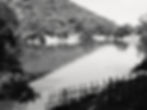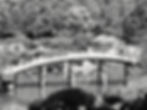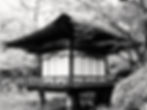Japan: 5 Essential Gardens for Landscape Photography
- Olivier
- Jan 15, 2020
- 9 min read
Updated: Nov 2
The art of Japanese gardens is imbued with mysteries. These miniature representations of imaginary or existing landscapes offer landscape architects an infinite margin for personal expression. Although these gardens can be classified into styles corresponding to specific periods, they remain peaceful places of contemplation for the visitor. Here is a selection of 5 historical gardens that have particularly fascinated me in all seasons.

© O. Robert
To offer scenes that challenge and provoke thought while providing the mind with a moment of escape. Such is the calling of these places, sublimated by the talent of Japanese landscape artists for centuries. Each visitor finds their personal interpretation based on their knowledge or history. But one thing is certain, the taming of natural elements is at its peak.
Everything seems to be in its place, perfectly controlled by the expert hands of the gardeners who strive to maintain the spirit of the garden as it was conceived, through a continuous re-interpretation over time. These gardens are visited like museums, following routes defined by the designer in order to grasp their subtle intricacies. These havens of peace are often exceptional refuges conducive to reflection.
Transported into a modeled universe, the photographer delights in these compositions that represent sometimes the sea, sometimes mountains covered with forests. Bridges, lanterns, pebble beaches, and pavilions punctuate these reconstituted landscapes.
The forces of nature represented in these compositions result in a peaceful harmony, more conducive than ever to calmness or meditation. All the elements are thus combined to satisfy the most demanding photographers.
Pavilions or other traditional buildings generally punctuate these gardens and are cleverly placed in the most spectacular perspectives of these estates. They provide scale to the image and are appreciated for their remarkable architecture. Moreover, these pavilions often house tea rooms where you can enjoy an excellent Matcha while contemplating the spectacle of this mastered nature.

© O. Robert
Discover the programme and join us for a tailored exploration of light, culture, and composition through the lens.
Contents:
1. Ritsurin Garden in Takamatsu
The city of Takamatsu in Kagawa Prefecture (Shikoku) is home to one of the jewels of garden art: Ritsurin Garden. Its history, landscape character, and unique vegetation make it one of the most spectacular parks and a designated part of Japan's cultural heritage.

© O. Robert
The garden was constructed over a period of more than 100 years, between the early 17th century and the mid-18th century. Most of the construction work took place during the Edo period (1603-1868).
Its composition has evolved over time. The magnificent pond located south of the estate facing Mount Shiunzan, was the work of Ikoma Takaoshi (the lord of Sanuki), who created this body of water in 1625.
The vast 75-hectare estate is famous for its lush vegetation and trees. Indeed, it features no less than 1000 remarkably pruned centuries-old pines, landscaped ponds, canals, and traditional tea houses. All these skillfully organized elements punctuate the stroll of visitors, amazed by such mastery of nature.

© O. Robert
Ritsurin Garden was used as the main residence for 11 generations of Daimyo lords until the so-called "Meiji Restoration" period.
In 1875, Ritsurin Garden became a prefectural park and was opened to the public. In 1953, during the Showa period, it was designated as a "Place of Scenic Beauty" under the Cultural Properties Protection Law.
I have identified 7 interesting photography spots in Ritsurin Garden, which you can discover in the dedicated article:
The Centuries-Old Pines
The Shoko Shoreikan Buildings
The Nanko Pond (South Pond)
Boating on Nanko Pond and its Canals
The Kikugetsu-tei Pavilion
The Higurashi-tei Pavilion
The Fuyosho and Gun’ochi Ponds

© O. Robert
2. Yushi-en Garden in Matsue
There are rare moments in a photographer's life that forever imprint on their mind. The shock of an encounter, a discovery, or an unexpected moment is often the opportunity to capture their most beautiful shots or, at the very least, to keep an indelible memory of it.
This was the case when I first discovered this garden. Yushi-en Garden is certainly one of the most beautiful gardens I have had the pleasure of photographing in Japan.

© O. Robert
This exceptional garden is located on Lake Nakaumi, 16 km from the city of Matsue in Shimane Prefecture. This prefecture is part of the San-in region. Situated on the northwest facade of Honshu Island, on the Sea of Japan side north of Hiroshima, the San-in region literally means "In the shadow of the mountains".

© O. Robert
If you are lucky enough to visit in November or December, you can also admire the particularly vibrant autumn colors in this garden. Although of medium size, you will spend a long time capturing in images the subtle scenes, the details of the vegetation, the structures of the pruned pines, and the pond overlooked by elegantly shaped trees.
To conclude your visit, do not hesitate to enjoy the exceptional viewpoint over the garden from the tea house, where you can also taste a ginseng specialty. The island is indeed renowned for its production of ginseng and peonies.

© O. Robert
3. Momijidani Teien Garden in Wakayama
Momijidani Teien is a traditional garden located in the Wakayama Prefecture, Japan. It is situated near Wakayama Castle and is known for its picturesque landscapes, especially the Japanese maple trees (Momiji), from which it derives its name. "Momijidani" literally means "valley of the maples" in Japanese.
The garden is often visited in the fall when the maple leaves change color, transforming the garden into a picturesque artwork.

© O. Robert
The garden is part of the park that directly surrounds the castle. Momijidani Teien is primarily a stroll garden typical of the Edo period (1603-1867). This style of gardens is known as Daimyo Gardens.
Designed according to the principles of Japanese gardening, it features natural elements such as rocks, ponds, and trees to create a serene atmosphere. It is also equipped with various facilities such as wooden bridges, stone lanterns, and paved paths that allow visitors to walk around and appreciate the garden's natural beauty.
This magnificent estate is particularly famous for its collection of Momiji maples and blooming azaleas. Abundantly present in the form of trimmed shrubs, these azaleas, subtly blended with the Momiji maples, are spectacular.

© O. Robert
The estate consists of a large pond by which a tea pavilion is located, and a shaded promenade that extends over the contours of the pond and garden. The pond marks the end of the moats surrounding the castle park.
There is no shortage of noteworthy viewpoints for photography. The pond is a constant presence in the image and balances the framing. The tea pavilion is undoubtedly at the heart of this garden, due to its position and architecture. Photographers can take advantage of the numerous walking paths to admire, depending on the season, the contrasts and colors.
And if you feel like it, do not hesitate to enjoy an excellent Matcha tea in the tea house located at the top of the garden.

© O. Robert
4. Adachi Museum of Art Garden in Yasugi
This museum is located in Yasugi in Shimane Prefecture. This prefecture is part of the San-in region. Situated on the northwest facade of Honshu Island, on the Sea of Japan side north of Hiroshima. As said, the San-in region literally means "In the shadow of the mountains".

© O. Robert
As its name suggests, the complex is primarily a museum. Created by Mr. Adachi Zenko in 1970, it brings together an exceptional collection of paintings by Yokoyama Taikan and various other Japanese artworks.
Keen on linking his art collection with nature, the owner commissioned the creation of this garden, not knowing at the time that it would become the museum's masterpiece. Curiously, it is mainly for this garden that tourists flock in large numbers each year to the Adachi Museum of Art.

© O. Robert
This contemplative garden has just been selected for the 18th consecutive year by the American magazine The Garden Ranking of Japan as the most beautiful garden in Japan.
You can also enjoy a pleasant moment of relaxation in the traditional tea house Juraku-an while savoring a Matcha tea and contemplating the garden. Because this garden is meant to be viewed from a distance. Unfortunately, it is not possible to access it and walk through it.

© O. Robert
5. Shukkei-en Garden in Hiroshima
Shukkei-en Garden is a work of art among traditional landscaped gardens. It is located in the center of Hiroshima city in the Naka-Ku district.
Built in 1620, and undoubtedly one of the most beautiful landscaped gardens in Japan, Shukkei-en is intimately connected to the city's history. In addition to events related to World War II, this garden has experienced a tumultuous history.

© O. Robert
It features a very beautiful stone arch bridge (Koko-Kyo) which is undoubtedly the central point of the garden. A scene inspired by the West Lake in Hangzhou, China, which has made the Shukkei-en Garden famous.
Plan for at least 2 hours to photograph it. It is imperative to go there as soon as it opens to avoid the crowds. Shukkei-en Garden is vast, but there are few paths. They quickly become saturated, and visitors take their time, stopping of course in line with the most beautiful viewpoints.

© O. Robert
If you can, visit it in the fall. As in many other places in Japan, this is undoubtedly the most suitable season for contemplating gardens. The Momiji maples then display their almost unreal, legendary colors.
The stone bridge Koko-Kyo stands proudly in the center of the pond, dividing it into two parts, north and south. It is a constant presence in the miniature landscapes that this garden offers and will undoubtedly be at the heart of your photos. It allows crossing the pond by passing over some of the 14 islands, a miniature representation of the islands of the Seto Inland Sea.

© O. Robert
This selection is obviously not exhaustive. It represents the 5 gardens where I was able to take my most interesting photos of these miniature landscapes while enjoying the tranquility of the places. It is also based on a personal interest in places rich in history or representative of a major artistic culture.
I therefore invite readers to read the articles dedicated to each of these 5 gardens for more information.
The quality of photographic moments is not always measured by the quantity of prints produced, but also by the pleasure that these privileged moments of connection to nature through the image represent.
Everyone will have their own idea of what constitutes the most beautiful gardens in Japan. But by visiting these 5 estates, you will normally not be disappointed and will undoubtedly be able to take very beautiful photos.











